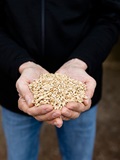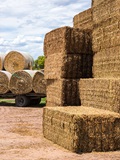Bega Valley
20 May 2020
| Date | Bega 23 | Bega 22 | Bega 5YA |
|---|---|---|---|
| 06-Jan-23 | 341 | 285 | 338 |
| 13-Jan-23 | 348 | 285 | 338 |
| 20-Jan-23 | 353 | 285 | 349 |
| 27-Jan-23 | 353 | 285 | 352 |
| 03-Feb-23 | 353 | 285 | 354 |
| 10-Feb-23 | 353 | 285 | 354 |
| 17-Feb-23 | 356 | 285 | 354 |
| 24-Feb-23 | 358 | 285 | 354 |
| 03-Mar-23 | 358 | 285 | 355 |
| 10-Mar-23 | 358 | 285 | 353 |
| 17-Mar-23 | 358 | 285 | 353 |
| 24-Mar-23 | 358 | 285 | 353 |
| 31-Mar-23 | 358 | 285 | 345 |
| 07-Apr-23 | 358 | 285 | 345 |
| 14-Apr-23 | 359 | 285 | 345 |
| 21-Apr-23 | 360 | 285 | 345 |
| 28-Apr-23 | 360 | 285 | 338 |
| 05-May-23 | 360 | 285 | 338 |
| 12-May-23 | 360 | 284 | 338 |
| 19-May-23 | 360 | 283 | 338 |
| 26-May-23 | 360 | 283 | 349 |
| 02-Jun-23 | 365 | 288 | 350 |
| 09-Jun-23 | 360 | 288 | 350 |
| 16-Jun-23 | 358 | 288 | 350 |
| 23-Jun-23 | 355 | 288 | 350 |
| 30-Jun-23 | 350 | 288 | 350 |
| 07-Jul-23 | 340 | 288 | 357 |
| 14-Jul-23 | 335 | 291 | 375 |
| 21-Jul-23 | 330 | 293 | 376 |
| 28-Jul-23 | 320 | 293 | 385 |
| 04-Aug-23 | 320 | 293 | 396 |
| 11-Aug-23 | 315 | 293 | 400 |
| 18-Aug-23 | 313 | 293 | 413 |
| 25-Aug-23 | 310 | 293 | 413 |
| 01-Sep-23 | 310 | 293 | 413 |
| 08-Sep-23 | 293 | 403 | |
| 15-Sep-23 | 283 | 379 | |
| 22-Sep-23 | 283 | 379 | |
| 29-Sep-23 | 283 | 378 | |
| 06-Oct-23 | 283 | 378 | |
| 13-Oct-23 | 283 | 371 | |
| 20-Oct-23 | 288 | 371 | |
| 27-Oct-23 | 288 | 371 | |
| 03-Nov-23 | 288 | 358 | |
| 10-Nov-23 | 288 | 359 | |
| 17-Nov-23 | 300 | 362 | |
| 24-Nov-23 | 300 | 364 | |
| 01-Dec-23 | 304 | 353 | |
| 08-Dec-23 | 308 | 352 | |
| 15-Dec-23 | 318 | 354 | |
| 22-Dec-23 | 323 | 355 | |
| 29-Dec-23 | 335 | 360 |
Notes:
Change in price is the change since the last report. Hay quoted is sourced and delivered locally, GST exclusive unless stated otherwise. It should be noted that local prices quoted may not be the cheapest available, sourcing it from another region may be more affordable, and buyers are encouraged to evaluate all options. Prices are indicative to a mid-range shedded product, and based on the best indication of market value at the time of reporting. It should be noted there is a wide variation in quality of hay, prices for a mid-range product will not reflect the weighted average of trade. Prices will naturally vary based on the product quantity and quality, buyer/seller relationship and the size of the trade.The hay report has been commissioned by Dairy Australia to provide an independent and timely assessment of hay markets in each dairy region. This report is created using data provided by the Australian Fodder Industry Association (AFIA). It should be remembered that actual prices may vary for quality or other reasons. Whilst all reasonable steps have been taken to ensure the accuracy of the information contained in this report, Dairy Australia disclaims all liability to the fullest extent permitted by Australian law for any inadvertent errors and for any losses or damages stemming from reliance upon its content. Dairy Australia recommends all persons seek independent advice and, where appropriate, advice from a qualified advisor before making any decisions about changes to business strategy.
Commentary
- Widespread rainfall across the region this week, but very low totals overall, with much of the Valley receiving between 1mm and 5mm of rain. Frosts continue to be reported in the region.
- Though there has been another week with some rainfall, rainfall totals were low and has done little to lift the prospects in the region. Pastures remain brown and dry with the only areas showing any green growth under irrigation.
- Subsoil moisture levels continue to drop in the region, with little rainfall to seep down to rebuild them. Some cereal crops shown in June are showing patchy growth due to the lack of rain over the growing period and the inability to tap into the diminishing soil moisture.
- Fodder supplies continue to be fed out to herds in the region, with on-farm stocks being steadily depleted. While available on-farm stores are still reasonable, mixed farmers are looking at a drier spring and comments suggest that there will need to be a couple of good seasons ahead to rebuild those stores.
- Enquiries remain elevated as the continuing dry conditions drive demand and local supply is limited. Sheds across Victoria, South Australia and parts of the Riverina are being emptied to make way for the next season and quite a bit of that variable quality supply is moving into the Valley.
- Some change to pricing this week.
- Cereal hay: +/-0 ($290 to $330/t). Prices remain steady this week.
- Lucerne hay: +/-0 ($440 to $460/t). Prices remain steady this week.
- Straw: +/-0 ($100 to $155/t). Prices remain steady this week.
- Pasture hay: +3 ($310 to $340/t). Prices increase this week.
- Please note: Unless stated otherwise, prices are per tonne, sourced and delivered locally. The price range indicated is for feeds of varying quality with the price range generally indicative of quality of feed. We recommend feed testing and viewing of fodder before purchase to be sure of the quality of feed.

